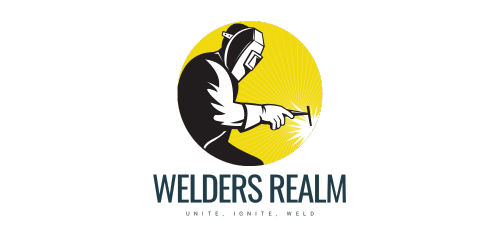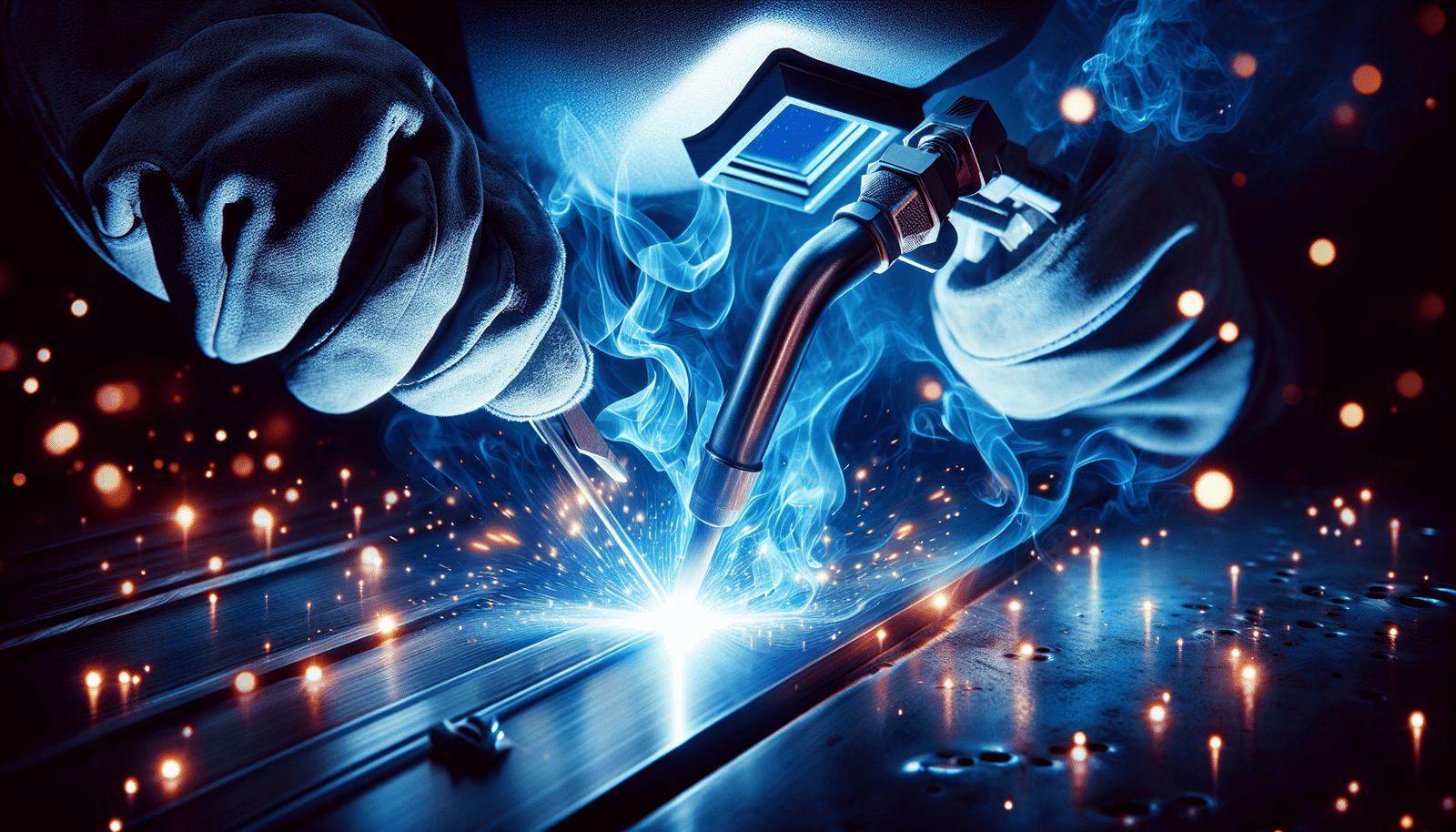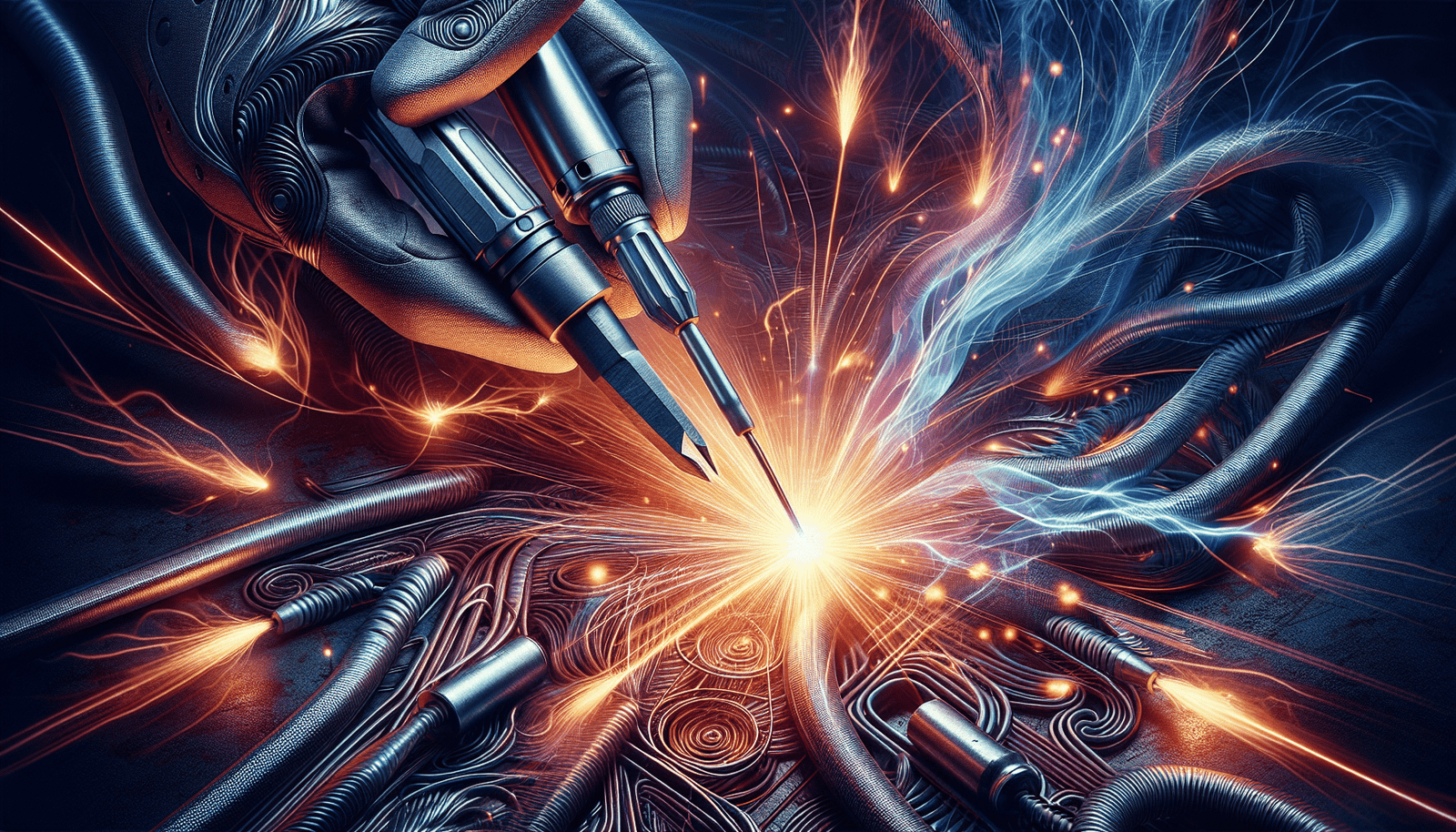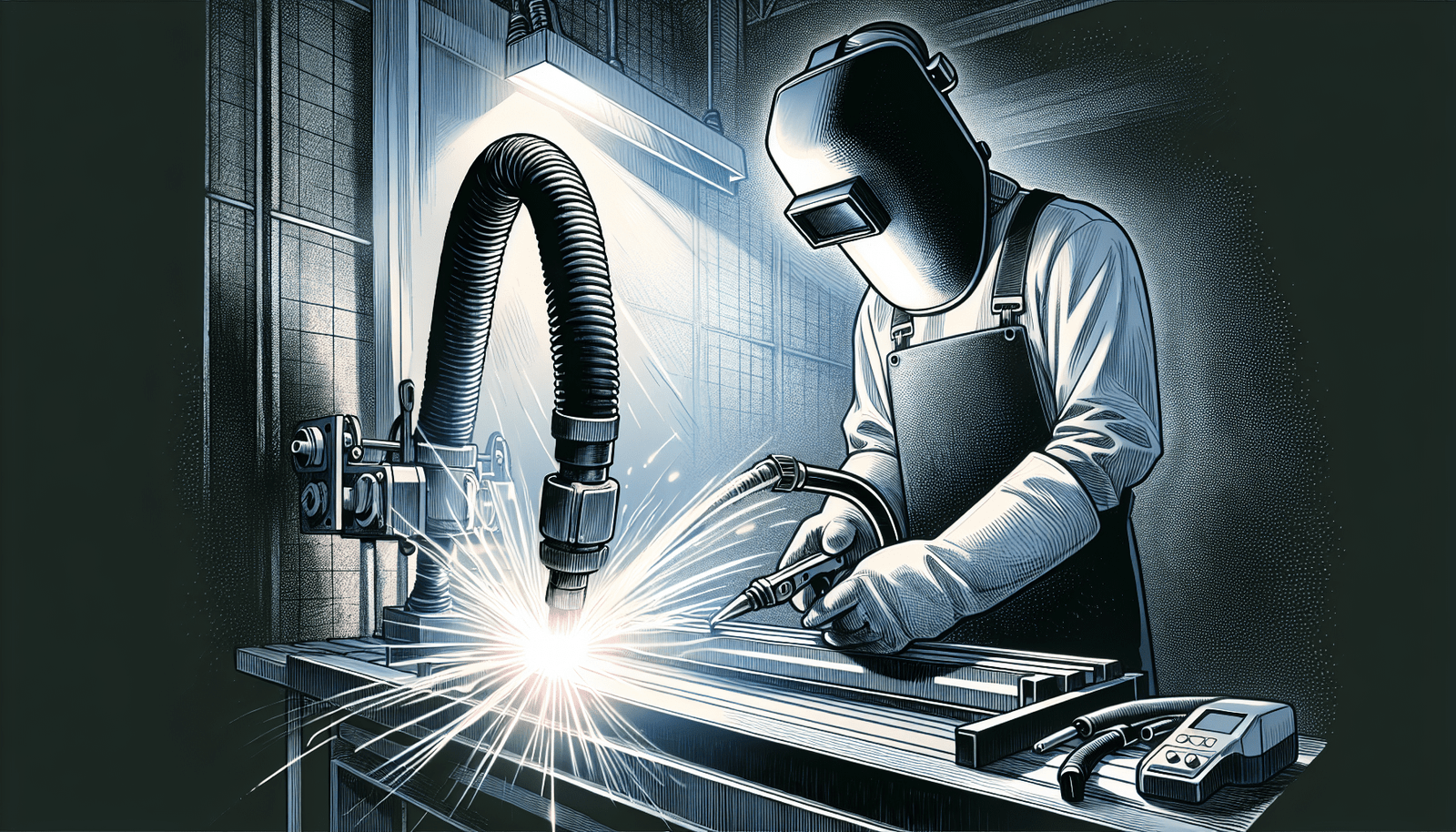Looking to master the art of stainless steel welding? Look no further! In this article, we have gathered the top tips from welding experts to help you achieve flawless welds on stainless steel. Whether you’re a seasoned pro or just starting out, these tips are sure to make your welding projects a breeze. From choosing the right type of stainless steel to mastering the techniques for a clean and strong weld, we’ve got you covered. So grab your welding gear and get ready to become a stainless steel welding guru!
Understanding Stainless Steel Welding
Stainless steel welding is a critical process in many industries, as it allows for the joining of stainless steel components to create strong and durable structures. Whether you’re working on a construction project or repairing a piece of equipment, having a solid understanding of stainless steel welding is essential. This article will provide a comprehensive guide to help you grasp the basics of stainless steel welding, from the importance and principles to the selection of the right methods and materials. We’ll also cover post-welding processes, maintenance of welding equipment, and the convenience of shopping online for welding supplies.
Overview and Importance of Stainless Steel Welding
Stainless steel is widely used in industries such as construction, automotive, aerospace, and many more, thanks to its exceptional corrosion resistance, high strength, and aesthetic appeal. However, the process of welding stainless steel differs from welding other materials due to its unique composition and properties. Therefore, understanding the principles and techniques of stainless steel welding is crucial to ensure strong and reliable welds.
The basic principles of welding stainless steel involve creating a bond between two metal pieces by heating them to their melting point and allowing them to fuse together. However, stainless steel has a higher thermal conductivity and a lower rate of thermal expansion compared to other metals, which affects the welding process. It requires careful consideration and proper techniques to avoid issues such as distortion, cracking, or loss of corrosion resistance.
Different types of stainless steel have varying properties that can influence the welding process. Some stainless steels are more sensitive to heat and prone to distortion, while others are more resistant to corrosion. Understanding these properties is essential for selecting the right welding methods and filler materials to achieve optimal weld quality.
Preparation Before Welding
Before diving into the welding process, proper preparation is vital to ensure successful and reliable welds. This preparation includes cleaning the welding surface to remove any contaminants or oxides that can affect the quality of the weld. This can be done using specialized cleaning solvents or mechanical methods such as wire brushing or grinding.
Selecting suitable welding equipment is another crucial step in the preparation process. Depending on the project and the type of stainless steel being welded, different welding processes may be deemed more appropriate. Common methods include Tungsten Inert Gas (TIG) welding, Metal Inert Gas (MIG) welding, or Stick welding. Each method has its advantages and limitations, which we will discuss further in the next section.
Setting up the work environment properly is also essential before beginning the welding process. This includes ensuring proper ventilation to remove harmful fumes, arranging a clear and organized workspace, and taking necessary safety precautions to protect yourself and others from potential hazards.
Choosing the Right Welding Method
Different welding methods are suitable for stainless steel, each with its own set of advantages and disadvantages. The choice of welding method depends on various factors, such as the type of stainless steel being welded, the thickness of the material, the joint design, and the desired weld characteristics.
TIG welding, also known as Gas Tungsten Arc Welding (GTAW), is a widely used method for stainless steel welding. It offers precise control over the heat input and allows for the use of filler material when necessary. TIG welding produces clean and high-quality welds, making it suitable for thin materials and critical applications.
MIG welding, or Gas Metal Arc Welding (GMAW), is another popular method for stainless steel welding. It is relatively faster and more cost-effective than TIG welding, making it suitable for thicker materials and larger welding projects. However, it may not provide the same level of precision and cleanliness as TIG welding.
Stick welding, or Shielded Metal Arc Welding (SMAW), is a versatile method that can be used for both stainless steel and other materials. It is commonly used in outdoor or remote locations where portability and flexibility are important. While it may not offer the same level of control and cleanliness as TIG or MIG welding, it can still produce strong and reliable welds.
When selecting the right welding method, it’s essential to consider factors such as joint accessibility, material thickness and composition, weld appearance requirements, and the equipment available. Consulting with welding professionals or experts can provide valuable insights and guidance in choosing the optimal welding method for your specific project.
Selecting Suitable Filler Material
Filler material plays a crucial role in stainless steel welding, as it helps create a sound and strong bond between the base metals. The choice of filler material depends on various factors such as the type of stainless steel being welded, the welding method used, the desired weld characteristics, and the application requirements.
Common types of filler materials for stainless steel welding include austenitic stainless steel fillers, duplex stainless steel fillers, and nickel-based fillers. Austenitic fillers are the most commonly used and are suitable for welding most types of stainless steel. Duplex fillers are used for welding duplex stainless steels and offer improved corrosion resistance and strength. Nickel-based fillers are used for special applications requiring high-temperature resistance or exceptional corrosion resistance.
To choose the right filler material, it’s important to consider the chemical composition of the base metal, the desired mechanical properties of the weld, and the potential for post-weld heat treatment. Consulting welding experts or referring to welding consumable manufacturers’ recommendations can help ensure the selection of the most appropriate filler material for your welding project.
The filler material used in stainless steel welding can have a significant impact on the quality and strength of the weld. It is important to carefully follow recommended guidelines for filler material selection, storage, handling, and usage to achieve optimal results.
The Role of Shielding Gas in Welding
Shielding gas is an essential component in stainless steel welding, as it protects the molten weld pool and the surrounding area from atmospheric contamination. Stainless steel is prone to oxidation and the formation of unwanted oxides during the welding process, which can lead to defects and reduced corrosion resistance.
The most commonly used shielding gases for stainless steel welding are argon and helium, either alone or in a blend. Argon provides excellent arc stability and coverage, while helium offers improved heat penetration. The choice of shielding gas depends on factors such as the welding method, the type of stainless steel being welded, and the desired weld characteristics.
It’s important to use the right shielding gas flow rate and maintain a consistent gas coverage throughout the welding process. Too little or too much shielding gas can result in inadequate protection or excessive turbulence, affecting the quality of the weld. Following welding procedure specifications and taking into account the recommendations provided by welding consumable manufacturers can ensure proper shielding gas usage.
Welding Safety
Safety should always be a top priority when engaging in stainless steel welding. The process involves exposure to heat, sparks, fumes, and potentially harmful radiation, making it crucial to take appropriate safety measures to protect yourself and those around you.
Proper ventilation is essential in the welding environment to remove welding fumes and gases, which can be hazardous to health. Ensure that your workspace is well-ventilated or employ local exhaust ventilation systems to maintain good air quality.
Using personal protective equipment (PPE) is vital to protect yourself from potential hazards. This includes wearing flame-resistant clothing, safety glasses or welding helmets with appropriate filters, gloves, and hearing protection. Additionally, proper training and knowledge of safe welding practices can minimize the risk of accidents.
In case of an accident or emergency, it is important to know the appropriate actions to take. This can include having a first aid kit readily available, knowing emergency contact numbers, and being familiar with basic first aid procedures. Promptly seek medical attention for any injuries or symptoms resulting from welding activities.
Troubleshooting Common Welding Problems
During the stainless steel welding process, various issues can arise that may affect the quality and integrity of the weld. Understanding common welding problems and how to identify and correct them is essential to ensure successful and reliable welds.
Some common issues faced during stainless steel welding include porosity, cracking, distortion, incomplete fusion, and loss of corrosion resistance. These problems can arise due to factors such as improper cleaning, inadequate shielding gas coverage, incorrect welding techniques, or faulty equipment.
Identifying the root cause of the problem is the first step towards finding the appropriate solution. This may involve inspecting the weld and surrounding areas, evaluating the welding parameters and techniques, and considering external factors such as environmental conditions. Once the cause is determined, appropriate corrective actions can be taken, such as adjusting welding parameters, changing welding techniques, or improving cleanliness and preparation practices.
Prevention is always better than correction when it comes to welding issues. Proper cleaning and surface preparation, adherence to recommended welding parameters, utilization of suitable welding techniques, and regular inspection and maintenance of equipment can help minimize the occurrence of common welding problems.
Post-Welding Processes
After completing the welding process, post-welding processes are often necessary to enhance the quality and appearance of the weld. These processes help eliminate weld defects, improve mechanical properties, and ensure the desired aesthetic finish.
Common post-welding processes for stainless steel include grinding, polishing, and heat treatment. Grinding can be used to remove excess weld metal or smooth out uneven surfaces. Polishing enhances the aesthetic appearance by providing a smooth and reflective finish. Heat treatment processes, such as annealing or stress relieving, can be applied to improve the mechanical properties and reduce residual stresses in the weld.
Selection of the appropriate post-welding processes depends on factors such as the weld joint design, the desired final appearance, and the mechanical properties required. Consulting welding professionals or referring to applicable welding codes and standards can provide guidance in selecting the most suitable post-welding processes for your specific application.
Maintenance of Welding Equipment
Proper maintenance of welding equipment is essential to ensure its longevity, performance, and safety. Regular maintenance activities can prevent premature equipment failure and minimize the risk of accidents during the welding process.
Maintenance activities for welding equipment may include cleaning, inspection, lubrication, calibration, and replacement of worn or damaged parts. Cleaning should be performed regularly to remove dust, dirt, and debris that may affect the functionality and performance of the equipment. Inspecting the equipment for signs of wear, damage, or misalignment helps identify potential issues that may require repairs or adjustments.
Lubrication of moving parts, such as hinges or slides, ensures smooth operation and extends their lifespan. Calibration of welding machines and monitoring of welding parameters help maintain consistent and accurate weld quality. It is also important to keep an eye out for signs of wear and tear, such as frayed cables, loose connections, or degraded safety features, and take prompt action to address them.
Early detection and resolution of equipment issues can prevent costly breakdowns, production delays, or compromised weld quality. Following the manufacturer’s maintenance recommendations and guidelines, and establishing a regular maintenance schedule can contribute to the overall efficiency and safety of your welding process.
Shop Online for Welding Supplies
In today’s digital age, shopping online for welding supplies offers a convenient and efficient way to access a wide range of products and equipment. Online welding supply stores provide a vast selection of welding consumables, safety equipment, welding machines, and accessories, all at your fingertips.
When shopping online for welding supplies, there are a few factors to consider. Firstly, it’s important to ensure that the online store provides high-quality products from reputable brands. Look for customer reviews and ratings to gauge the reliability and reputation of the store and its products. Additionally, consider factors such as pricing, shipping options, return policies, and customer support services.
The convenience of online shopping allows you to compare prices, read product descriptions, and make informed decisions from the comfort of your own home or workshop. Online stores often offer a wide range of products to suit different welding needs, and they may also provide useful resources such as guides, tutorials, or expert advice to assist you in your welding projects.
In conclusion, stainless steel welding is a critical process that requires a solid understanding of the principles, techniques, and materials involved. Proper preparation, including cleaning the welding surface and selecting appropriate equipment, is vital for successful welds. Choosing the right welding method, filler material, and shielding gas can greatly impact the quality and strength of the weld. Safety measures should be followed at all times to protect yourself and others. Troubleshooting common welding problems, performing post-welding processes, and maintaining welding equipment are crucial for achieving reliable and durable welds. Finally, shopping for welding supplies online offers convenience and accessibility, allowing you to find the right products for your welding needs with ease.





